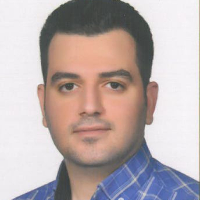Effect of Calcium Hydroxide and Triple Antibiotic Paste on the Bond Strength Sealer to Dentin
This research study aimed at assessing the bond strength of Sealer AH26 to the root canal walls after using calcium hydroxide and triple antibiotic paste as an intracanal medicament.
n this experimental study, 35 human single-canal teeth (including premolar and central) were conducted in the Faculty of Dentistry of Islamic Azad University of Isfahan and the laboratory department of Professor Tarabinejad Research Center in the winter of 1994 and spring of 1995. The samples were divided into two groups of 15 people and one group of 5 individuals. After the preparation of the canals, calcium hydroxide was used in the first group and triple antibiotic paste was used in the second group as medicine inside the canal, and in the control group of 5 people, no drugs were used. Then the canals were sealed using AH26 sealer and gutta-percha. In the next step, discs with a thickness of 1.5 mm were prepared from each sample at intervals of 4 and 11 mm, and then the force applied during the exit of gutta-percha and Sealer was recorded by the universal push-out test device. Finally, the statistical data was analyzed using (one-way analysis of variance) (p value < 0.05).
The average bond strength of the Sealer to the dentin walls in 1/3 apical and 1/3 coronal of the root canal shows that the bond strength of the root canal of the triple antibiotic paste group is higher than the average bond strength of the calcium hydroxide group, but it is not statistically significant (p value > 0.05).
The results of the study showed that calcium hydroxide and triple antibiotic paste do not have much effect on the bond strength of AH26 sealer to root canal dentin.
-
Radiographic and Pathological Findings of Inflammatory Dentigerous Cyst in the Mandible: A Case Report
Nasim Jafari Pozve, Fatemeh Aghajani, *
Journal of Isfahan Dental School, -
Evaluation of ultraviolet and visible radiation on Staphylococcus aureus, Pseudomonas aeruginosa of culture medium and total count of oral microbes and solid surfaces
Mohammad Goli, Sharifeh Shahi*, Mahdi Moghzi, Rahman Amini, Mitra Mansori Beni, , Seyed Mohsen Ranjbaran
Food Science and Technology,



